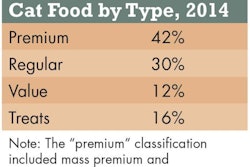Part three of a series: Petfood communication revisited
Shortly before another board meeting of Feed Your Pet Inc., Joe Zweifel (chairman of the board of directors) and Justin Case (marketing director) meet. Joe has bought into the stories for brand and product but feels a key element is still missing.
Joe: I believe in what you say about product and brand positioning, but I seem to miss something, although I can’t precisely define what it is.
Justin: I think I know what it is: corporate communication. Because in our case, it doesn’t make a lot of sense to highlight brand and product and to forget who’s behind all this.
Joe: You took the words right out of my mouth: meatloaf, right? I do not wish to give people the idea that it’s just a brand and product that could come from any manufacturer. I want the brand and products to be seen as special rather than just different. For me, special is more powerful and possibly also more challenging.
Justin: Your thoughts are mine; and for me it’s good to see that you take a keen interest in the matter. The dilemma we are facing is that on the one hand, we have our solid, don’t-rock-the-boat brands that have their well-deserved place in the market; and on the other hand, we will have a brand and range of products that is meant to surprise the market. This doesn’t make the corporate positioning easier.
Joe: You’re absolutely right. It all seems a bit dualistic. But a workable and credible solution needs to be found, without complicated messages.
Justin: Just off the cuff, I think we need to communicate that we are a company in transit and that the new brand and products are a first step in a different direction. We leave our values and beliefs (by the way, do we have any?) unchanged, but we explain that we are preparing ourselves for a new and different future. Be transparent, that’s what the nowadays consumer expects.
And don’t be afraid of competition. They will have an idea of where we’re going as soon as the new brand is launched anyway. But it will take them time to react should they want to. And not all of them will have the guts to even consider the changes we are talking about and preparing. Don’t get me wrong, I never underestimate competition, but I think it is wrong to let your strategy be defined by the fear of it.
Joe: You speak my mind. But as you can understand, not all board members are like me. Therefore, explain in detail what your thoughts are. As you know, at the next board meeting, the floor is yours.
Justin: I will emphasize the key elements for our corporate communication. For me, these are our values and beliefs, to paint the picture of what we stand for; our experience and trustworthiness; and our heading for a different future that will focus on more sustainability and fairness for all stakeholders, including the pets.
Most of these elements are dynamic, so there is always a story to tell about them. I wish to paint the picture of a company on the move, preparing itself for change. As Charles Darwin said: “It is not the strongest of species that survives, nor the most intelligent that survives. It’s the one that is most adaptable to change.” If we adhere to that statement, the world will know what we are and what we stand for.
Joe: Let’s leave it at that for now. I see where you wish to go and I support your views. Question is, how does it fit our overall strategy?
Justin: if you ask me, the answer is that we still do not have a strategy. A wish list yes, some vague often unquantified objectives as well, but no clue as to how we are going to reach our objectives, let alone a description of the direction we’re going to take and why. Let me give you my views on the most recent strategy paper: I think it’s an incoherent piece of work that offers no guidance whatsoever. And yet we use it—or should I say abuse it—to torpedo initiatives because they do not fit the strategy.
Joe: I am afraid I have to say that you are right again. I struggle with a board that is strongly action-oriented with little time for contemplation. The current strategy paper is the result of democratic management. Every board member had the right to speak his or her mind, resulting in something wishy-washy. For which the blame is entirely on me. You can help me in bringing forward a robust paper that can be discussed by the board, so we have a framework within which to reason and to discuss. I want you to be present in this meeting to answer questions that are bound to be asked. Also to get a better impression of what our board meetings are like.
Justin: I will try to have my thoughts on paper within, say, three weeks. Do not expect too much detail. My first paper will be the result of strategic thinking with my management team and not yet of strategic planning.
21st Pet Street, home of Change Stranamics

















